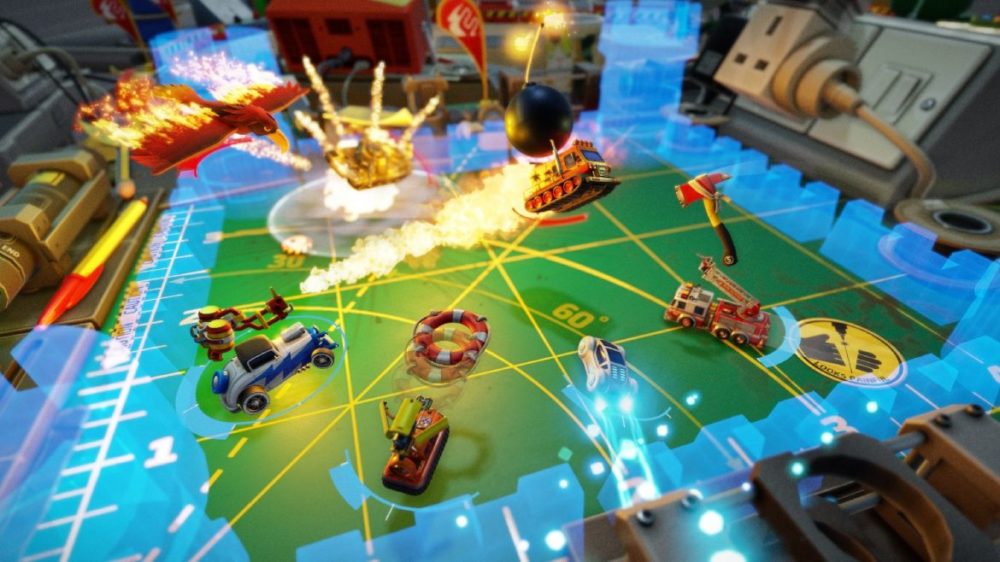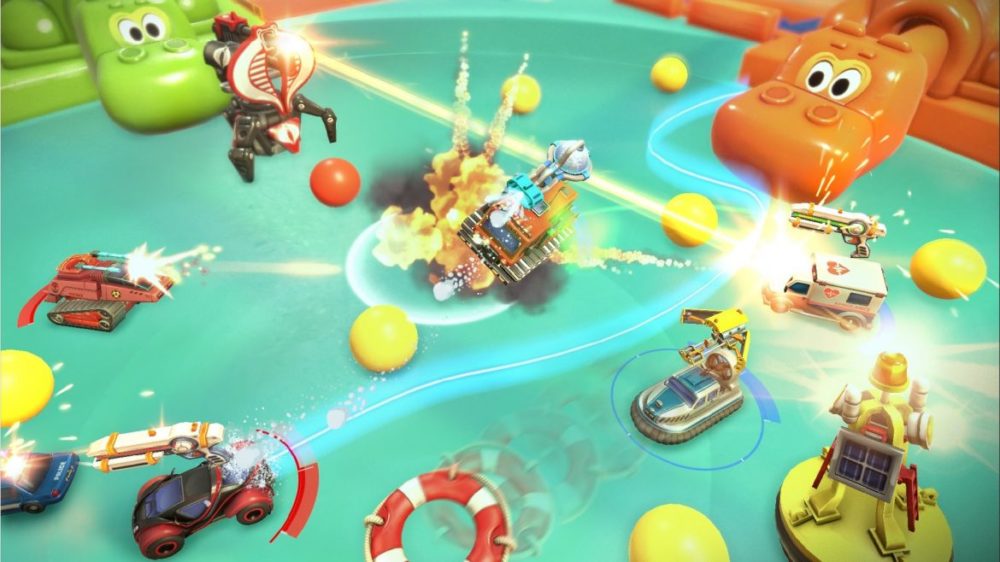TL;DR
Nostalgic fun or frustrating throwback? Micro Machines World Series aims to revive the beloved miniature racing series with its signature isometric arcade action. While long-time fans might appreciate the throwback gameplay, the new entry falters with dated visuals, unrefined controls that feel less responsive than its predecessors, and a glaring lack of a single-player campaign. The focus is purely on online multiplayer, which can be a mixed bag due to control quirks and visual clarity issues. It's a decent pick-up for the price if you're a die-hard fan, but newcomers might find it a bit too rough around the edges. Dive into the full review to see if this miniature racer can still navigate the modern gaming landscape!
Micro Machines is a classic series of toy cars from Hasbro, the renowned toy manufacturer. The transition from toys to video games has seen numerous successes, a notable example being the Forza Horizon 3 Hot Wheels expansion. This expansion cleverly incorporated Mattel’s iconic racetracks as inspiration for the downloadable content island off the Australian coast. The initial Micro Machines game debuted in 1991, but Micro Machines V3, released in 1997, remains a fan favorite.
Capitalizing on the retro gaming trend, Codemasters, the original developer of Micro Machines, has released a new title aimed at the contemporary gaming audience of 2017. The core concept remains consistent: arcade-style racing featuring toy cars and other miniature vehicles viewed from an isometric perspective, emphasizing high-speed races and elimination-based battles.
While graphics and sound were never the defining features of the Micro Machines franchise, the simplistic presentation in this iteration is somewhat noticeable, especially when running on modern hardware like the PS4 (Pro). This aesthetic may appeal to purists seeking a nostalgic experience. However, new players engaging in online battles might find the visuals somewhat unrefined, lacking clarity, and overly simplistic.
Micro Machines World Series suffers from the notable absence of a dedicated single-player campaign mode, compelling players to engage primarily in online multiplayer. This omission is regrettable, as the charm of the earlier titles partly resided in their engaging tracks and varied challenges. While experience may play a factor, the controls in World Series feel less responsive compared to its predecessors. Mastering precise vehicle handling can be a time-consuming endeavor, particularly given the diverse selection of vehicles available. Furthermore, the isometric perspective introduces unique control challenges for modern players; for instance, steering “backwards” when the car is oriented downwards on the screen, a mechanic that was intuitive in games like Super Cars 2 on the Amiga, now feels considerably more challenging within the often-confined multiplayer environments of Micro Machines World Series.
In conclusion, Micro Machines World Series is not inherently a poor game, but it falls short of being exceptional. Longtime enthusiasts of the classic Micro Machines titles will likely find it enjoyable, especially considering its reasonable price point. However, those unfamiliar with the series, or those who haven’t played it in recent decades, may find the game somewhat dated, lacking polish, and ultimately limited in scope. While anticipation and nostalgia may have been high, the game struggles to capture the retro magic, often resulting in a frustrating online experience as players grapple with the tracks and attempt to master the somewhat imprecise controls. Consequently, players may become discouraged before achieving a competitive level of proficiency.



